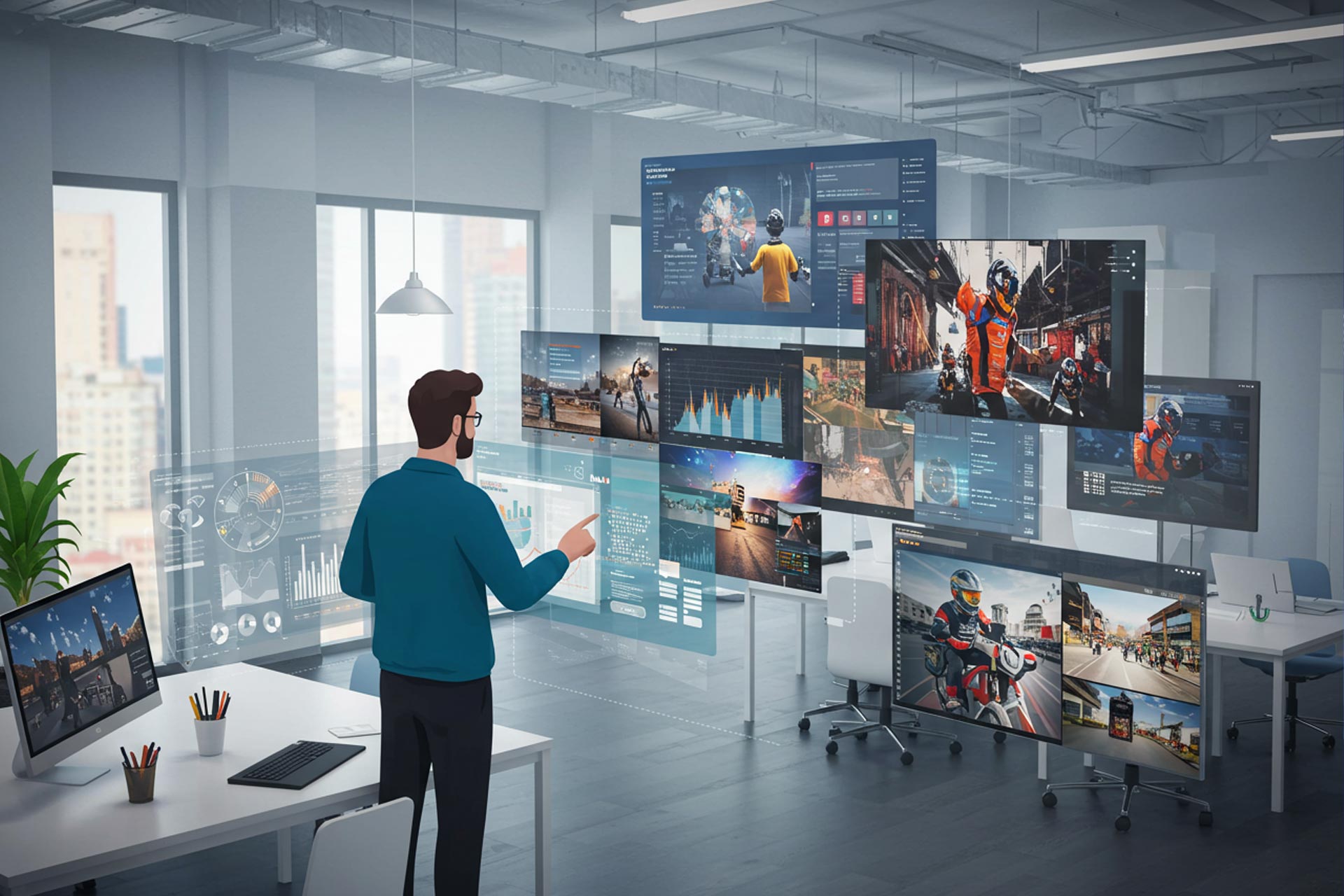
Harnessing Big Data in Visual Marketing: How Data Drives Impactful Visual Strategies
Visual marketing today is no longer about just producing pretty images or polished videos. It has evolved into a data-driven discipline. With the rise of big data and artificial intelligence tools, marketers now have the power to create targeted, emotionally engaging, and high-converting visual content. In this article by Loop Media, we explore how businesses can strategically harness big data to enhance every stage of their visual marketing campaigns.
1. Why Has Big Data Become Essential in Visual Marketing?
The Digital Noise Is Deafening
With a flood of visual content across platforms, brands need something extra to stand out. Big data provides a competitive edge by helping understand exactly what resonates with audiences.
Rising Consumer Expectations
Today’s audience demands hyper-personalized experiences. Generic content no longer cuts it—visuals must feel tailor-made for each viewer.
AI and Machine Learning Breakthroughs
Modern tools can now analyze massive datasets in real time, turning insights into actionable content adjustments with unprecedented speed and precision.
2. How to Use Big Data in Visual Marketing Strategies
Understand Your Target Audience
- Analyze how users interact with visual content—how long they watch, where they click, which images they engage with.
- Use sentiment analysis to interpret comments and text associated with videos or ads, revealing emotional responses.
- Combine demographic data (age, gender, location) with psychographic data (interests, values, lifestyle) to build highly detailed audience personas.
Scale Personalized Visual Content
- Use dynamic elements in video or image ads (like product type, text, or color) based on real-time user data.
- Leverage AI-powered visual recommendations—similar to YouTube or Netflix—to suggest videos or products based on past interactions.
- Identify where each user is in the buying journey and serve visuals tailored to that specific stage.
Improve Visual Content Creation
- Big data can reveal which colors, layouts, or even faces perform best in visual ads.
- Use machine learning to run advanced A/B or multivariate tests on visual designs and instantly determine top performers.
- Generate graphic drafts, short-form videos, or product mockups using generative AI, cutting production time and cost significantly.
Optimize Campaign Performance and ROI
- Go beyond click-through rates and measure visual engagement metrics like view time, completion rates, eye-tracking zones.
- Build highly targeted custom audiences for visual ads across platforms using user interaction data.
- Identify which channels offer the best ROI for visual content and allocate ad budgets accordingly.
Manage and Improve Visual Assets
- AI tools can categorize visual assets (photos, videos) based on colors, subjects, or emotions—making them easier to find and reuse.
- Use heatmap data and user behavior to enhance page layouts and improve on-site visual experiences.
Real-World Examples of Data-Driven Visual Marketing
- A fashion brand used customer insights to tailor ad visuals by age group, resulting in higher click-through and purchase rates.
- A video platform increased watch time by 40% using AI to recommend clips based on users’ visual interaction history.
- An eCommerce company performed real-time design testing to find the best-performing product image—boosting conversion rates significantly.
Ready to Turn Your Data into Visual Success?
Big data in visual marketing is no longer optional—it’s a necessity. By tapping into the power of analytics and AI, brands can craft visuals that not only look good but perform exceptionally. At Loop Media, we specialize in turning raw data into visual strategies that inspire, convert, and grow your brand.
Need help crafting smarter, data-driven visual campaigns? Reach out to our team today!
- 📞 (+966) 53 692 8397
- 📧 Support@loop-media.co
- Visit our Contact Us page.
This article is available in Arabic. You can read the Arabic version [here].
Frequently Asked Questions
Why is big data important in visual marketing?
It helps understand user preferences, personalize visuals, and measure campaign performance effectively.
How is data used to improve video content?
By analyzing user behavior, marketers can tweak visuals, messages, and timing for maximum impact.
Can AI generate complete visual content?
Yes. AI can create designs, short videos, and visual recommendations based on audience data and preferences.
What tools help track visual performance?
Tools like Google Analytics, Hotjar, and heatmaps can provide deep insights into visual engagement and UX.
 العربية
العربية


